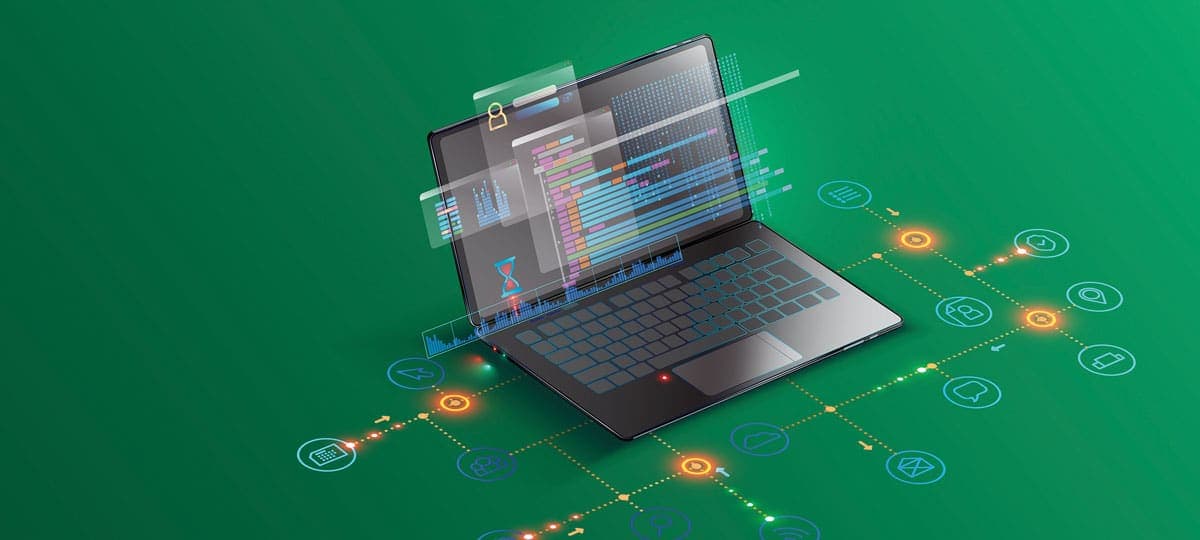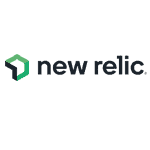Direct SAP monitoring without detours


Fresh from the source
What used to be part of the basics of information technology, most companies now manage via the user interface of their cloud provider. Sure, the hardware still exists. But companies don't rent a specific number of computing units, they rent software: a program that emulates their personal IT structure on the provider's servers. Cables, computers and switches on-premises are replaced by code. "Everything as Code" is the name of the DevOps movement's vision of the future, in which knowledge of YAML or JSON is enough to solve any IT problem. Klaus Kurz, Senior Director, Solutions Consulting Central Europe at New Relic, explains what this means and how companies can keep their SAP systems under better control.
Important but complex
SAP's software collection is now well established. A number of tools have also become established for monitoring the SAP stack. But even with in-house solutions, IT teams often face challenges:
Hard to understand: A common problem that companies face is interruptions or slowdowns in the process flow. The reasons for this are manifold: be it resource overload or a database problem, IDoc or RFC errors, batch job delays or poor performance in the Fiori browser. The integration of external systems can also be the cause of unrest in the SAP stack. A multitude of agents, tools and proprietary software is more of a hindrance here when it comes to monitoring one's entire SAP system consistently at transaction and process level.
Slow to release: The know-how for proven monitoring and management solutions is available in many companies. Finding and solving problems in SAP environments quickly is made difficult by many SAP dashboards, logs or tables that often have to be searched through manually. What's more, if you don't have the know-how, you don't understand anything. In other words, communication with teams that don't have extensive SAP expertise is made much more complicated by a lack of shared telemetry data.
Elaborate to manage: For example, when it comes to reporting on SLOs (Service Level Objectives) and SLAs (Service Level Agreements), SAP administrators regularly reach their limits. A solution that provides an overview not only of individual SAP software, but also of the rest of the tech stack and the integration of various programs is usually missing. Consistent reporting and transparency of the entire business processes thus become tedious manual work.
Closer to the source, closer to the source code
With regard to SAP, "everything as code" is still music of the future that must first be composed. Especially since SAP is often used together with other proprietary software, the use of a common configuration and program architecture is a long way off. But there are now solutions that attempt to implement this approach. Managing software "as code" brings some advantages for the visibility of system operations and eases the work of IT teams.
Reduced workload: Especially on a large scale, the maintenance and creation of resources is time-consuming. For example, different user interfaces that must be manually managed prevent rolling out a configuration system-wide. If administrators have access to the code, they can much more easily apply changes en masse to all code-managed resources, for example, through a single interface.
Documentation and context: It can be quite difficult to manage many resources, to understand and track changes. Especially with SAP systems, which often act at critical points and are interwoven with other software, a good overview is important. A wide variety of resources can make it difficult to understand individual resources and the reasons for their configuration. If the systems are configured via the code, developers can document changes, comment on them if necessary, and thus understand who made which decision, when and why.
Disaster Recovery: This also enables another advantage: Because the code is versionable, configurations can be partially rolled out, tested, and - if something doesn't work - taken offline again. Errors happen occasionally. They become a challenge when it takes a lot of effort to undo them. The "as Code" management implements here in a figurative sense the back button in the browser, where you previously had to remember the URL of the previous page and type it in again by hand.
Better observability
If all software is managed with the same configuration language, in the best case even using the same programming language, it is much easier to collect telemetry data. Standalone evaluation tools that rely on third-party agents and may only work for a single software or vendor are then a thing of the past. Instead, all information from different parts of the tech stack can be collected via a single interface and also forwarded in a centralized manner. This also makes it possible to create individual dashboards for the company's own requirements.
Away from the agent, towards AI
"Everything as Code" is slowly but steadily making its way further and further into enterprise tech stacks. In the long run, the work of IT teams will be made much easier. Since the manual evaluation of many different telemetry data and a solid know-how for proprietary software are eliminated, they can focus on those challenges that cannot be automated. This makes "Everything as Code" something like the "sliced bread" of digitization: The subsequent work steps are significantly simplified thanks to standardized preparatory work and are less prone to errors.
For users of SAP systems, for example, this can mean turning away from agents and monitoring tools and instead relying on an agentless AI solution. For example, a single SAP-certified connector on the server makes it possible to collect and evaluate all telemetry data without detours. Because the different components all communicate in the same language, there is significantly less configuration work. Data does not have to be collected, forwarded and evaluated - it all happens in a single program. For example, monitoring of Abap-based (Advanced Business Application Programming) SAP systems such as ECC and S/4 Hana becomes fully comprehensive. Users can thus gain an overview of their SAP systems at all levels: at infrastructure, application and process level.
For companies that rely on SAP, this means: less work, more development.





